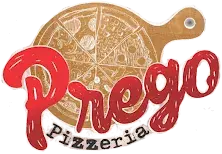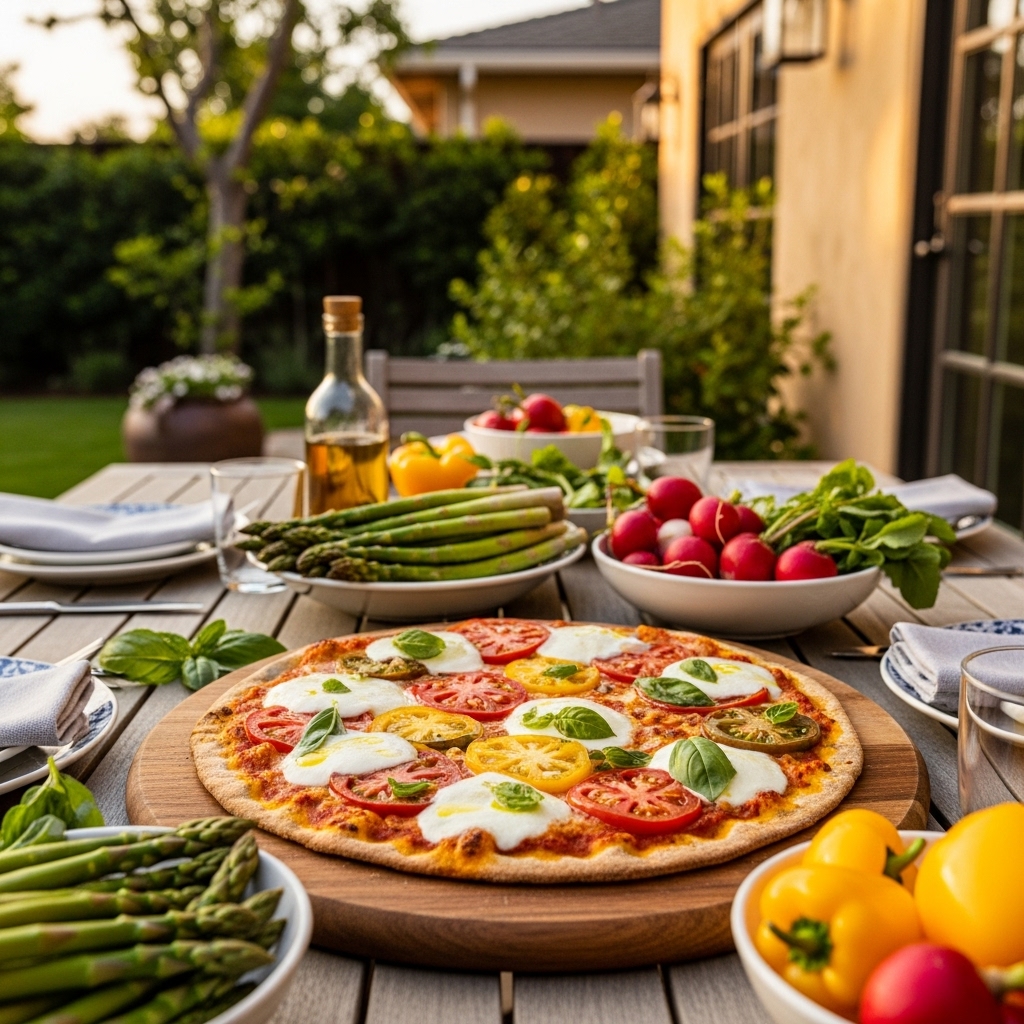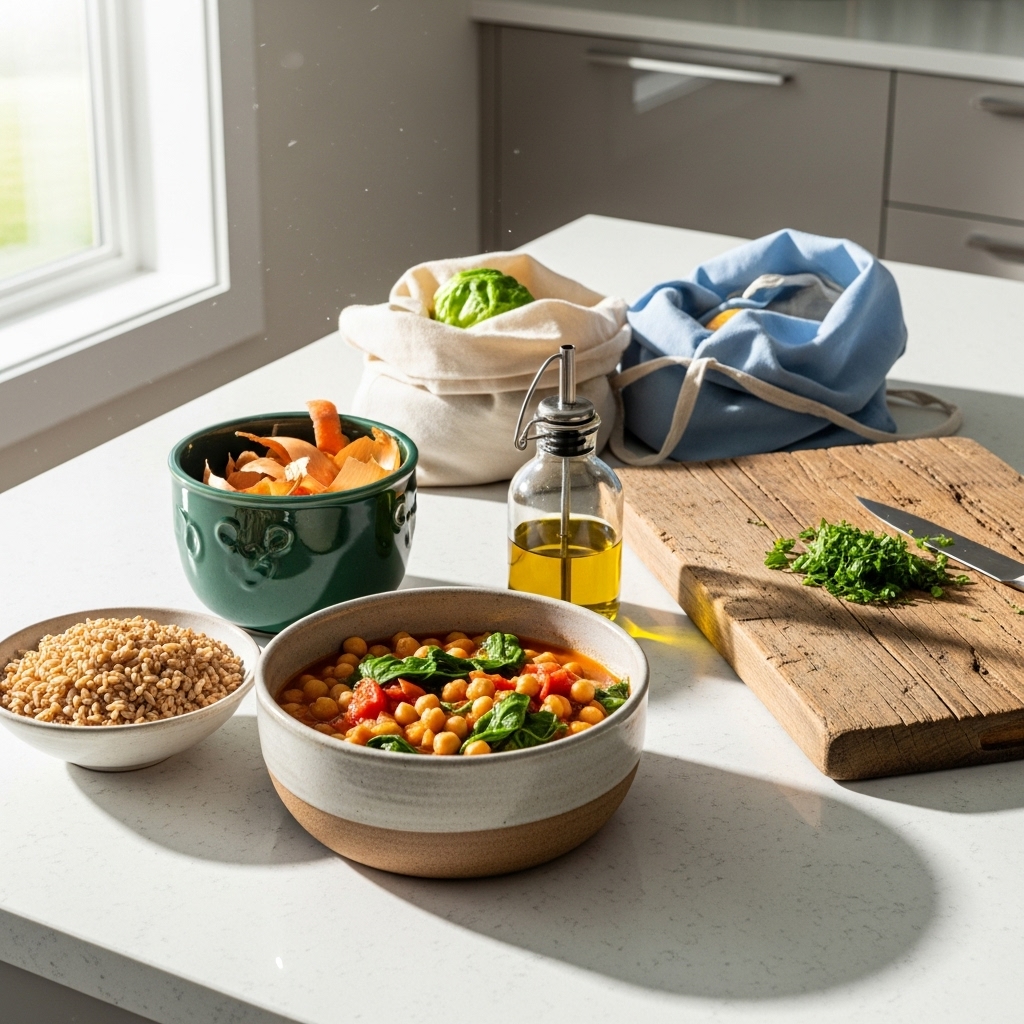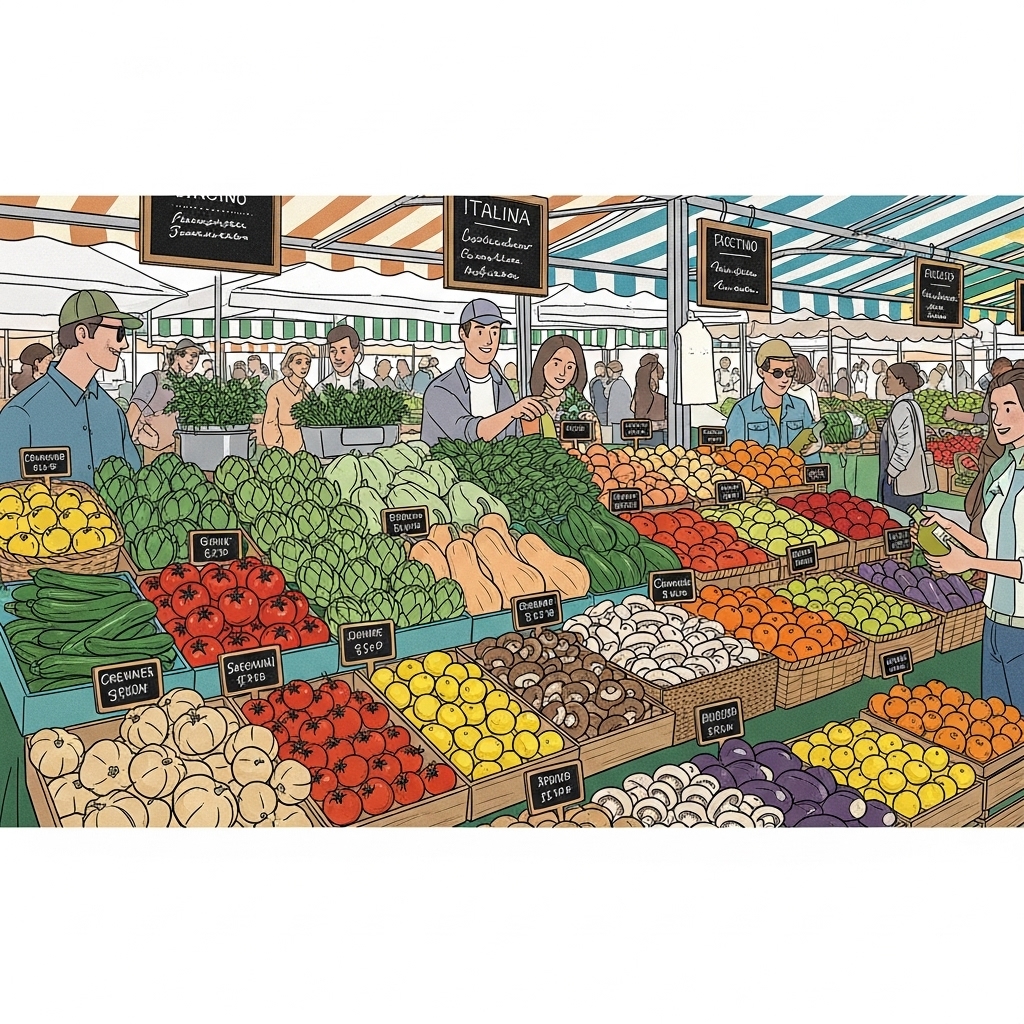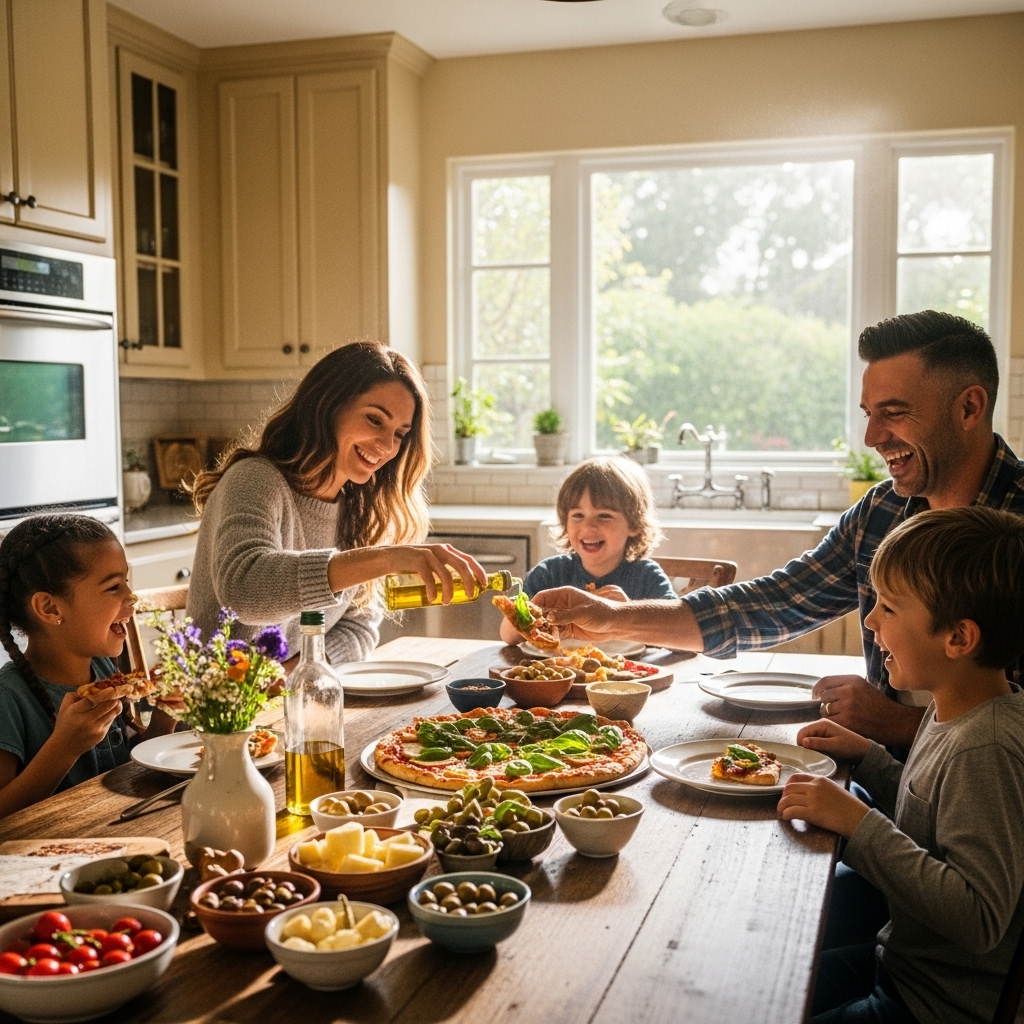Spend enough evenings in Encino and you realize that pizza isn’t just a meal, it’s part of the neighborhood’s rhythm. From families gathering after school practices along Ventura Boulevard to friends hosting casual movie nights, there’s a steady heartbeat of dough being stretched, sauces simmering, and ovens flashing to life. As a local who talks food with chefs, health coaches, and market vendors week after week, I’ve come to appreciate how a thoughtfully made pizza can be both joyful and genuinely supportive of your well-being. That may sound surprising at first, but when you look at the roots of the dish, the quality of our local ingredients, and the way we eat together in Encino, a delicious, balanced pie makes perfect sense as a feel-good staple.
Before we go any further, let’s set the tone: I’m not here to turn pizza into a lecture. I’m here to show how the dish we already love can align with smart choices, local produce, and sensible habits. The right crust, smart toppings, and fresh technique add up to real benefits—nutritional and otherwise. And if you’re curious where to start or how to try something new, local spots that focus on craft and seasonality make it simple to explore quality pizza with confidence.
The Mediterranean spirit behind a modern Encino favorite
Pizza’s roots are grounded in Mediterranean cooking, which is widely celebrated for its balance and abundance of plant-forward ingredients. Think ripe tomatoes, peppery olive oil, fragrant basil, and a pantry that leans on legumes, herbs, and vegetables. When a pie begins with a bright, long-simmered sauce and a drizzle of good oil, you’re already tapping into a pattern of eating that emphasizes whole, minimally processed foods. Local chefs in Encino often borrow from that approach, focusing on tomatoes with strong acidity and sweetness, and finishing pies with fresh herbs rather than heavy add-ons. The result is flavor that pops without overwhelming the palate or the body.
Tomatoes in particular deserve the spotlight. Slow-cooking brings out their natural sweetness and concentrates beneficial compounds like lycopene. Pair that with a restrained hand of cheese—often fresh mozzarella that melts into a gentle, milky blanket—and you gain balance instead of excess. The goal is not to remove the cheese you love; it’s to choose the right style and amount, so the cheese harmonizes with the sauce and crust instead of stealing the show. In Encino, where people genuinely care about how food feels as much as how it tastes, this kind of harmony is becoming the norm.
Crust choices: fermentation, whole grains, and the feel-good factor
Ask anyone who bakes bread around here and they’ll tell you: fermentation matters. A well-fermented dough develops flavor slowly while also becoming easier to digest for many people. Long, cool ferments create delicate bubbles and a crisp-chewy texture that’s satisfying without being heavy. Some Encino pizzerias are experimenting with blends that include a portion of whole grain flour, which introduces flavorful bran and germ to the mix. A dough with a bit of whole wheat or spelt can deliver a toasty, nutty character that pairs beautifully with olive oil and seasonal vegetables.
Texture is central to satisfaction. When a crust lands at the table crisp at the edges and tender at the center, it encourages slower, more appreciative eating. You savor the crackle as you bite, the aroma that escapes from the crumb, and the interplay with your toppings. That mindful pace is more than poetic. It helps you tune into your own hunger and fullness cues, which is one of the most reliable ways to enjoy a meal that supports your health without feeling restricted.
Toppings that work for you: vegetables, herbs, and good fats
Encino farmers markets make it easy to build a colorful pie. Bell peppers, onions, mushrooms, spinach, arugula, cherry tomatoes, and squash all bring micronutrients and texture. When cooked properly—roasted first to concentrate flavor or added late to preserve bite—vegetables can shift a pizza from indulgent to deeply nourishing. A scattering of fresh arugula after baking adds peppery lift and a cool crunch that balances the warmth of the pie. A few marinated artichoke hearts lend soft tang and fiber. Even a touch of capers or olives can provide briny contrast, encouraging you to enjoy each slice more slowly.
Olive oil deserves its own mention. A measured drizzle of extra virgin oil before or after baking contributes a luxurious mouthfeel while complementing tomato acidity. When oil is used intelligently, you don’t need an abundance to gain flavor; a small amount adds both satisfaction and a connection to the Mediterranean template that gave us pizza in the first place. Pair that with fresh herbs—basil, oregano, thyme—and you get aroma that triggers appetite and delight without relying on heaviness.
Protein, balance, and smart pairings
One reason pizza fits well into real life is how adaptable it is. If you’re looking to round out a meal, adding a lean protein—grilled chicken, a few slices of quality turkey sausage, or a measured portion of prosciutto—can create a more balanced plate. Cheese also contributes protein, especially when chosen thoughtfully. Fresh mozzarella, low-moisture mozzarella, and small accents of tangy goat cheese can each play a role, and the key is balance. You want each bite to sing, not shout.
The flipside is equally important: pizza can be the vehicle for vegetables you might otherwise skip. A pie layered with spinach and mushrooms, finished with a squeeze of lemon, can taste bright and comforting at the same time. Encino diners tend to appreciate that a well-constructed pizza eliminates the false choice between pleasure and nutrition. You can have both. That mindset frees you to share a salad, drink water generously, and split a pie with friends, turning a casual night out into a meal that leaves you energized rather than weighed down.
Ovens, technique, and why heat matters
From wood-fired domes to modern deck ovens, our local kitchens know how to wield heat. High temperatures cook quickly, sealing in moisture while building a caramelized edge. When a pie bakes hot and fast, you need less cheese to feel satisfied because the flavor compounds from browning and charring do much of the heavy lifting. That’s one of the secrets to enjoying pizza in a health-supportive way: let technique do the work so you don’t need to pile on extras. You’ll notice how a blistered crust and concentrated sauce seem to fill the senses, and that’s not an accident. It’s culinary science meeting community craft.
Technique also includes how ingredients are handled before they ever meet the oven. Roasting mushrooms to drive off water prevents soggy slices, while thin-shaving raw zucchini and salting it briefly preserves snap without leaking moisture. Little steps like these make the difference between a pizza that feels heavy and one that tastes vibrant. Encino chefs trade tips constantly, and diners reap the rewards.
Local produce and the Encino advantage
Being nestled near fertile growing regions means Encino benefits from a steady stream of beautiful produce. In late summer, you might see pizzas crowned with torn basil and heirloom tomatoes that practically glow. In fall, tender slices of roasted squash and sweet onions make their way onto menus. Even in winter, greens like kale and chard find a home, sautéed lightly with garlic and finished with lemon zest to brighten the whole pie. This seasonal rhythm keeps palates curious and bodies satisfied because variety is built in, and variety is inherently good for you.
There’s also a community angle. When you order from places that work with local markets, you’re essentially joining a loop of care that supports growers and keeps your food system resilient. That kind of connection nourishes more than your body; it feeds your sense of place. Pair that with the warmth of a neighborhood dining room or a friend’s backyard table and you’ve created a ritual that sustains well-being on multiple levels.
Midway through your own exploration, consider how simple it is to make a small upgrade—a whole-grain crust option, an extra vegetable, or a lighter cheese blend—and see how your body responds. Many Encino diners find that fine-tuning like this becomes second nature after a few experiences with truly good pizza. The palate learns quickly when food is honest and thoughtfully made.
Mindful portions and the art of sharing
Sharing is one of pizza’s greatest strengths. Splitting a pie, pairing it with a crisp salad, and dwelling over conversation naturally guides you toward portions that feel right. You’re less likely to rush or eat past fullness when the meal includes pauses to talk and laugh. In Encino, where evenings often stretch on a shaded patio or a bright kitchen island, this style of eating is second nature. It’s not about restraint; it’s about presence. When you really taste your food, you often need less of it to feel content.
There are times you’ll want a hearty slice or two after a long day or a hike in the Santa Monica Mountains. That’s perfectly fine. Nutritional health is about patterns over time, not a single choice. The key is to let pizza be part of a flexible, joyful lifestyle that includes movement, hydration, and a spectrum of foods across the week. When pizza is built on quality ingredients and cooked with craft, it becomes an ally, not a problem to solve.
Hydration, sides, and the complete meal
Think of pizza as the anchor of a balanced plate. Add a crunchy seasonal salad—maybe little gems with citrus and fennel in winter, or tomatoes with cucumbers and herbs in summer—and you’ve covered a lot of nutritional bases. Drinking water generously before and during the meal can sharpen your senses and keep everything feeling light. If you enjoy a sparkling water with lemon or a nonalcoholic spritz, you’ll likely notice how the acidity amplifies the brightness of the sauce and cuts richness in a way that keeps your appetite steady.
Some folks like a small side of roasted vegetables or a cup of minestrone on cooler evenings. These are traditional pairings for a reason: they satisfy without overshadowing the main event. In Encino, where mild nights are the norm, these add-ons help turn a simple pizza gathering into a complete, nourishing experience.
Kids, families, and habits that last
One of my favorite Encino scenes is watching kids help stretch dough or scatter basil leaves under a parent’s watchful eye. Involving children creates curiosity and pride, and it’s the best way to build a lifetime of positive food choices. When kids taste the difference between a pie with fresh vegetables and one with heavy, unfocused toppings, they learn how to evaluate food on their own terms. They’re also more inclined to try new ingredients—broccoli rabe, roasted peppers, or even a touch of anchovy—because they had a hand in making the meal.
Families often tell me that pizza night is when everyone relaxes. That relaxation matters. When you sit down slightly less stressed, digestion works better, and you can sense fullness cues more easily. That’s not magic; it’s simply your body responding to an environment that feels safe and enjoyable.
How to evaluate a pie through a wellness lens
When you open the box or the pie lands at the table, notice the aroma and color first. Do you smell tomatoes, herbs, and a kiss of char? Do you see glistening vegetables and a crust that looks alive? Next, take a bite and pay attention to texture. Is the bottom crisp without being brittle? Does the cheese melt cleanly into the sauce? If the answer is yes, you’re likely looking at a pizza built with care, and that care is precisely what supports better choices without feeling like effort.
If you’re customizing, remember a few principles. Choose one or two bold flavors and let them lead—say, mushrooms and thyme—rather than mixing too many that compete. Ask whether vegetables can be roasted before baking to concentrate their taste. Consider a finishing touch like fresh arugula or lemon zest for brightness. Small decisions like these keep the pie dynamic and satisfying, which reduces the temptation to overdo it.
Frequently Asked Questions
Q: Can pizza truly fit into a health-conscious lifestyle in Encino?
A: Absolutely. When made with a well-fermented crust, a vibrant tomato sauce, balanced cheese, and vegetable-forward toppings, pizza aligns beautifully with a Mediterranean-style pattern. Pair it with salad, hydrate well, and eat mindfully with friends or family to feel your best.
Q: Are whole grain crusts worth seeking out?
A: Many diners find that a blend incorporating some whole grain adds flavor, texture, and satisfaction. It’s not mandatory for a great pie, but it’s a compelling option, especially if you enjoy toasty, nutty notes and a more complex chew.
Q: What are the best vegetables for topping a pizza without making it soggy?
A: Mushrooms, onions, peppers, broccoli rabe, and squash all shine when roasted to drive off moisture first. Delicate greens like arugula are best added after baking to preserve freshness.
Q: How much cheese is enough?
A: Think of cheese as a harmonizing element rather than the lead singer. Using a moderate amount of flavorful cheese—fresh mozzarella, for instance—allows the sauce and crust to shine, resulting in a more balanced and satisfying slice.
Q: Does the oven style make a difference for health?
A: High-heat ovens create browning and char that amplify flavor, so you often need fewer heavy toppings to feel satisfied. Good technique helps you enjoy a pie that’s lively and light on the palate.
Q: What if I’m feeding a group with different preferences?
A: Split pies or half-and-half toppings are your friend. Keep flavor themes coherent on each side—perhaps a vegetable-forward half and a protein-accented half—so every guest feels considered without overcomplicating the bake.
Q: How do I avoid overdoing it on pizza night?
A: Share, slow down, and build a simple side salad. Drink water, savor each bite, and check in with how you feel. When the meal is balanced and social, it’s far easier to stop at a satisfying point.
Q: Can kids learn healthier habits through pizza?
A: Definitely. Invite them to help shape dough, spread sauce, and add vegetables. Ownership breeds curiosity, and curiosity leads to adventurous, balanced eating.
If you’re ready to enjoy what Encino does best—food that’s welcoming, seasonal, and crafted with care—start with a thoughtful pie and see how great you feel afterward. Whether it’s a weeknight tradition or a weekend treat, a well-made pizza supports more than your appetite; it supports your lifestyle.
Ready to taste the difference? Join us for a pie that celebrates bright sauce, lively crust, and market-fresh toppings. Explore our approach to exceptional pizza, bring a friend, and make tonight a little more delicious.
